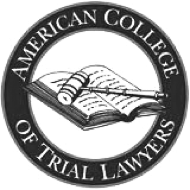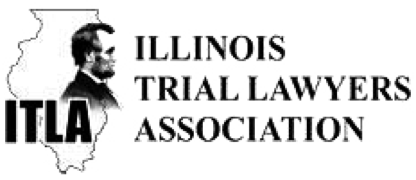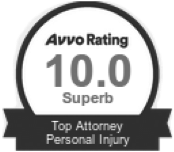Cerebral palsy is a condition that can have lifelong implications for those affected.
When cerebral palsy is caused by medical malpractice during pregnancy, childbirth, or postnatal care, it adds another layer of complexity to an already difficult situation.
Recognizing the symptoms of cerebral palsy due to medical malpractice is crucial for taking appropriate action. Continue reading to learn about the common symptoms associated with cerebral palsy caused by medical malpractice and the steps you can take to care for your loved one.
What is Cerebral Palsy?
Cerebral palsy is a group of neurological disorders that affect movement, muscle tone, and posture. Cerebral palsy is known to occur due to a brain injury to the baby before, during, or shortly after birth. This disorder can manifest in various forms, ranging from mild motor impairments to severe physical and cognitive disabilities. Unfortunately, brain injury due to medical malpractice is a well-known, preventable cause of cerebral palsy.
>>>Related read: Was Your Child Diagnosed With Cerebral Palsy? How and When to File a Medical Malpractice Claim
What are Medical Malpractice and Hospital Negligence?
Hospital negligence, or institutional negligence, refers to situations where hospitals fail to uphold their duty of care to patients, resulting in harm or injury. This negligence can occur through various means, including inadequate supervision of staff, lack of proper policies and procedures, and ineffective training or credentialing of healthcare providers.
Related, medical malpractice is a form of negligence in which healthcare professionals, including doctors, nurses, and other medical staff, fail to provide a standard level of care, resulting in harm, injury, or death to a patient. Types of medical malpractice can include misdiagnosis, surgical errors, medication mistakes, or inadequate treatment. Specifically when it comes to cerebral palsy, medical malpractice can occur when doctors and nurses fail to monitor a baby’s heart rate during the labor process or when they fail to perform a timely cesarean section delivery of a baby experiencing fetal distress.
Hospitals are also legally liable for medical malpractice committed by their doctors and medical personnel.
>>>Related read: Hospital Negligence: What It Is & How to Report It
Common Symptoms of Cerebral Palsy Caused by Medical Malpractice
Common symptoms of cerebral palsy caused by medical malpractice can include the following:
1. Hypoxic-Ischemic Encephalopathy
Hypoxic-ischemic encephalopathy (HIE) is a serious birth complication affecting babies who experience oxygen deprivation during the labor and delivery process. Treatable obstetric conditions that are known to cause HIE and increase the risk of brain injury in babies include preeclampsia, umbilical cord prolapse, placental abruption, infection or chorioamnionitis, maternal hypotension or low blood pressure, breech presentation, or shoulder dystocia.
A baby who experiences seizures soon after birth, or needs resuscitation after birth by a neonatologist, has likely experienced HIE and is at risk for cerebral palsy. Seizures or the need to be resuscitated indicate that the baby experienced a loss of oxygen at or near the time of birth and is suffering from HIE. Medical malpractice during labor and delivery, including the failure to properly monitor the baby’s heart rate or perform an emergency cesarian section delivery in response to fetal distress or any of the mother’s conditions listed above, can result in oxygen deprivation of the baby and increase the risk of seizures and subsequent brain damage.
>>>Related read: Why a Hypoxic-Ischemic Encephalopathy Diagnosis May Be the Result of Medical Malpractice
2. The Need For Head Cooling/Hypothermia Therapy
If your baby was sent after birth to the hospital’s neonatal intensive care unit for head cooling, there is the potential that malpractice occurred and exposed your baby to a brain injury and cerebral palsy. Head cooling, also known as hypothermia therapy, therapeutic hypothermia, or neonatal cooling, is only used if healthcare providers are concerned that the baby experienced oxygen deprivation during the labor and delivery process. Head cooling must take place soon after birth to reduce the severity of a baby’s brain injury.
>>>Related read: Think Your Child Has a Birth-Related Brain Injury? Here’s What to Do
3. Delayed Milestones
One of the earliest signs of cerebral palsy is delayed developmental milestones, such as sitting up, crawling, or walking. In cases where medical malpractice during childbirth or postnatal care leads to brain injury, these delays may become apparent in the first few months or years of a child’s life.
4. Muscle Spasms and Stiffness
Children with cerebral palsy may experience muscle stiffness, making movement difficult and sometimes painful. This stiffness can lead to muscle spasms or involuntary movements, particularly when attempting certain actions like reaching for objects or walking.
5. Poor Coordination and Balance
Difficulties with coordination and balance are hallmark symptoms of cerebral palsy. Children affected by cerebral palsy due to medical malpractice may struggle to control their movements, leading to challenges in activities requiring precise motor skills, such as grasping objects or standing upright.
6. Abnormal Muscle Tone
Cerebral palsy can result in abnormal muscle tone, manifesting as either hypertonia (increased muscle stiffness) or hypotonia (decreased muscle tone). Medical malpractice during pregnancy, childbirth, or infancy can contribute to these abnormalities, leading to difficulties in movement control and posture.
7. Speech and Swallowing Difficulties
Some individuals with cerebral palsy may experience speech and swallowing difficulties due to muscle control issues in the mouth and throat. Medical malpractice-related brain damage can exacerbate these challenges, impacting the individual’s ability to communicate effectively and consume food and liquids safely.
8. Seizures
Seizures are relatively common among individuals with cerebral palsy, especially for those affected by brain injuries around the time of birth. Medical malpractice during labor and delivery can sometimes result in oxygen deprivation or other factors that increase the risk of seizures and subsequent brain damage.
9. Intellectual Disabilities
While cerebral palsy primarily affects movement and muscle coordination, it can also be associated with intellectual disabilities in some cases. Brain injuries caused by medical malpractice may lead to cognitive impairments, affecting learning, problem-solving, and overall intellectual functioning.
10. Vision and Hearing Impairments
Cerebral palsy can sometimes cause vision and hearing impairments, further complicating the individual’s ability to interact with their environment. Medical malpractice-related brain damage may increase the likelihood of these sensory impairments, necessitating specialized care and support.
How to Take Action for Your Child’s Medical Malpractice-Related Cerebral Palsy
When a child is born with cerebral palsy due to medical malpractice, it can be devastating for families. Use these tips to ensure your child’s care and ongoing support:
Seek Medical Help
If you suspect that your child is exhibiting symptoms of cerebral palsy due to medical malpractice, schedule a medical evaluation from healthcare professionals experienced in diagnosing and treating the condition. Medical specialties that focus on the diagnosis and treatment of cerebral palsy include neonatology, pediatric neurology, physiatry, and neuropsychology. In making an appointment with one of these specialists, make sure they have experience in the diagnosis and treatment of HIE and cerebral palsy.
Consult Legal Experts
Contacting legal experts specializing in medical malpractice and birth injury cases, such as Hurley McKenna & Mertz, can help you understand your rights and options for seeking compensation and justice for your child’s injuries.
>>>Related read: Chicago Cerebral Palsy Lawyer: Experience Matters
Document Everything
Keep detailed records of your child’s medical history, including any prenatal care, labor and delivery records, and postnatal evaluations. Documenting symptoms, treatments, and interactions with your healthcare provider can strengthen your case if you choose to pursue legal action.
Join Support Networks
Connecting with other families affected by cerebral palsy can provide valuable emotional support, practical advice, and resources for navigating the challenges associated with the condition.
>>>Free resource: How to Support a Child After a Birth Injury
Advocate For Your Child
Be a vocal advocate for your child’s needs, ensuring they receive appropriate medical care, therapy, and educational support tailored to their unique abilities and challenges.
Play a Proactive Role in Your Child’s Health and Development
Your child’s health—without a doubt—is your number-one priority. But how can you ensure everything is on track and that you catch signs of a birth injury like cerebral palsy as soon as possible? Download our free Birth Injury Checklist, “Top Signs, Symptoms, and Questions to Ask Your Baby’s Doctor,” which will provide you with the top questions to ask your child’s doctor at their milestone appointments, spanning from three days to 30 months.







